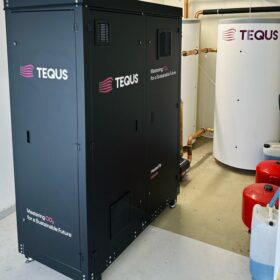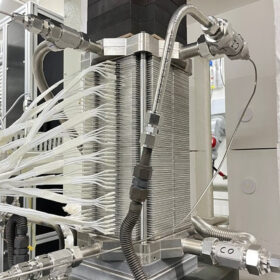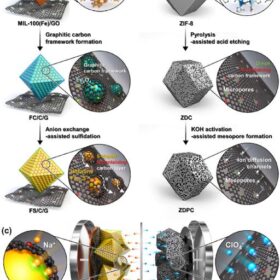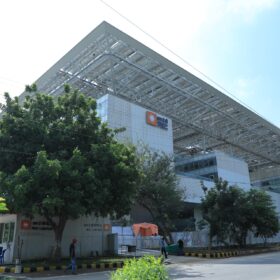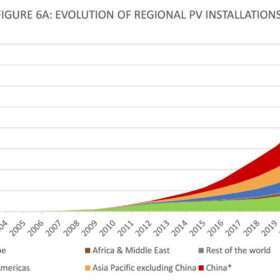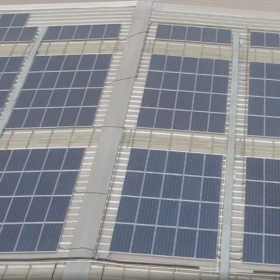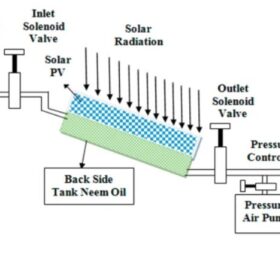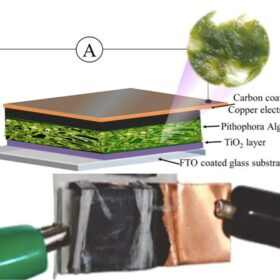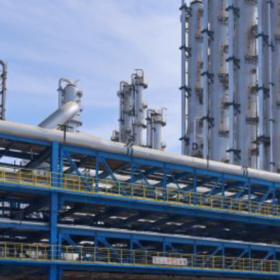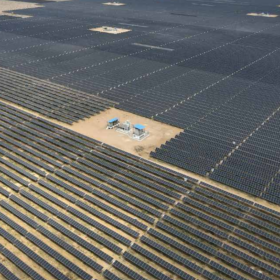Norwegian startup unveils CO2 water-to-water heat pump
Tequs said its new plug-and-play heat pump can deliver up to 90 C of heat for space heating, air conditioning, and domestic hot water. The new product is available in eight versions with capacity ranging from 17 kW to 268 kW.
Korean researchers build 8 kW solid oxide electrolysis cell that can produce 5.7 kg of hydrogen per day
The Korea Institute of Energy Research has developed a solid oxide electrolysis cell stack that uses a special kind of separator plate to ensure proper flow of hydrogen and oxigen after water splitting. Samsung Electro-Mechanics and Bumhan Industries are now cooperating with the research center to improve relevant manufacturing process.
Sodium-ion battery could charge in several seconds
Researchers at the Korea Advanced Institute of Science and Technology (KAIST) have identified a high-energy, high-power hybrid sodium-ion battery capable of charging in just a few seconds. The system integrates anode materials typically used in batteries with cathodes suitable for supercapacitors.
REC secures JPY 60.5 billion green loan backed by Italian export credit agency SACE
REC will use the funding to support projects which meet rigorous environmental standards, promote renewable energy and contribute to reducing carbon emissions.
At least 29 countries installed more than 1 GW of PV in 2023
IEA PVPS has published its new “Snapshot of Global PV Markets 2024” report, highlighting key insights and trends. Despite record installations, concerns over profitability and manufacturing dynamics persist, underscoring the need for strategic interventions and policy support to navigate towards a resilient and sustainable PV ecosystem.
GameChange Solar, JZNEE to build 3 GW tracker factory in Saudi Arabia
GameChange Solar, a US-based tracker supplier, has announced the construction of a 3 GW tracker factory in Saudi Arabia, with plans for potential expansion to 5 GW in the future.
A look into the green credit system for renewable energy
Green credits offer a vital mechanism for incentivizing environmentally positive actions beyond just corporations, involving individuals and communities. By providing tangible benefits for sustainable practices, such as renewable energy adoption and conservation efforts, green credits engage the public at large, fostering widespread participation in combating climate change.
ReNew, Japan’s JERA partner for green ammonia project in India
The green ammonia project to be developed in Paradip, Odisha, will have a green ammonia production capacity of around 100,000 tons per year by 2030. JERA will be the offtaker for the project.
Solar module cooling tech based on waste neem oil
An international research team has placed a neem oil tank on the back of solar modules for cooling purposes. The proposed solution reportedly improves PV panel performance by up to 17.8%.
Indian researchers develop solar cell from living algae
The researcher team, from Amrita Vishwa Vidyapeetham university in Coimbatore, India, sandwiched macroalgae between a carbon-coated copper electrode and a titanium oxide-coated fluorine-doped tin oxide electrode. The 1 cm2 device exhibited a 1.25 mA photocurrent and 0.5 V photovoltage under UV light.
